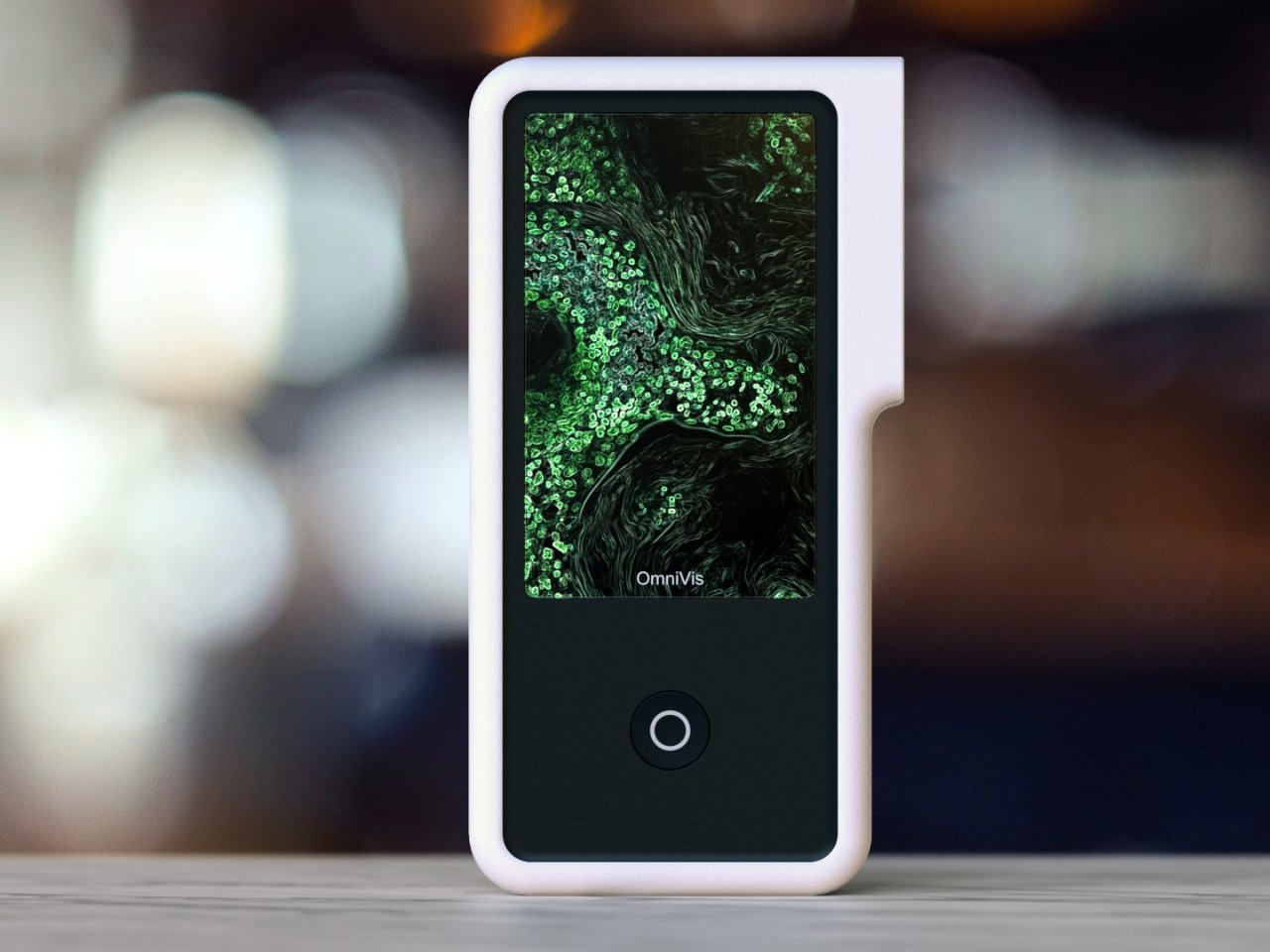Remember when COVID-19 tests felt like this rare commodity you’d wait hours for? What if a clinician could detect not just COVID-19, but cholera and a range of other pathogens in minutes with a device small enough to fit in your hand? That’s exactly what Boston startup OmniVis wanted to create, and they tapped industrial designer Vuk Dragovic to make it happen.
The result is a sleek handheld pathogen detector that looks more like a next-gen gadget than medical equipment. And honestly? That’s kind of the point. This isn’t something that sits in a pristine lab collecting dust. It’s built for the real world: crowded clinics, remote villages, pop-up testing sites, and anywhere else you need fast, reliable diagnostics.
Designer: Vuk Dragovic
What strikes you first is how intentionally simple the whole thing is. In a world where tech devices tend to pile on features until they’re impossible to use without a manual, the OmniVis detector goes the opposite direction. One button starts the test. Results show up on a clear, easy-to-read display. That’s it. No confusing menus, no multi-step processes that you’ll mess up when you’re tired or stressed.
Dragovic worked closely with the engineering team and led user research to understand exactly what clinicians needed. The device is compact and minimal, designed to feel comfortable whether you’re holding it vertically or horizontally. That flexibility matters more than you might think. In tight spaces or improvised medical settings, being able to adapt your grip and orientation without fumbling with the device can be the difference between smooth operation and frustrating delays.
The form itself is clean and purposeful. Looking at the design renders, you see a device that’s clearly been refined down to its essentials. There’s a satisfying geometry to it, the kind that suggests every curve and angle serves a function. The white and gray color palette keeps things professional but not clinical in that intimidating way. The display sits prominently at the top, large enough to read at a glance, with the interface elements arranged so you’re never hunting for information.
One of the most thoughtful touches is how the device handles different use scenarios. The dual-orientation capability means a clinician working at a makeshift desk can use it horizontally, while someone moving between patients can hold it vertically like a phone. It’s the kind of detail that seems obvious once you see it but requires real understanding of how people work in the field. The engineering challenge behind something like this is enormous. You’re cramming sophisticated pathogen detection technology into a package small enough to be portable but robust enough to survive being tossed in a medical bag and used in less-than-ideal conditions. The design had to accommodate all that tech while keeping the exterior simple and the user experience frictionless.
What makes this project particularly relevant now is how the pandemic reshaped our understanding of diagnostic testing. We’ve all become more aware of how critical rapid, accessible testing is for controlling disease spread. The OmniVis detector extends that capability beyond COVID-19 to multiple pathogens, which could be transformative for public health responses and for communities that lack access to traditional lab facilities.
There’s something compelling about design that strips away complexity to reveal exactly what’s needed and nothing more. In an age where we’re drowning in feature bloat and unnecessary bells and whistles, a tool that does one thing exceptionally well feels almost radical. The OmniVis pathogen detector is that rare combination of sophisticated technology wrapped in an interface so intuitive it practically disappears.
For clinicians working in challenging conditions, having reliable tools that don’t add cognitive load is essential. This device delivers results without demanding attention that should be focused on patients. And in the bigger picture, making pathogen detection more accessible and easier to deploy could help catch outbreaks earlier and save lives in communities that need it most. That’s good design: invisible until you need it, effortless when you use it, and built to work when it matters most.
The post This Handheld Detector Could Change How We Hunt for Pathogens first appeared on Yanko Design.

